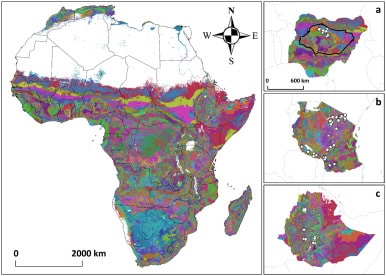Mapping Technology Extrapolation Domains for Ex-Ante Impact Assessments
Abstract
Traditional agricultural research and extension relies on replicated field experiments, on-farm trials, and demonstration plots to evaluate and adapt agronomic technologies that aim to increase productivity, reduce risk, and protect the environment for a given biophysical and socio-economic context. To date, these efforts lack a generic and robust spatial framework for ex-ante assessment that: (i) provides strategic insight to guide decisions about the number and location of testing sites, (ii) define the target domain for scaling-out a given technology or technology package, and (iii) estimate potential impact from widespread adoption of the technology(ies) being evaluated. In this study, we developed a data-rich spatial framework to guide agricultural research and development (AR&D) prioritization and to perform ex-ante impact assessment. The framework uses “technology extrapolation domains”, which delineate regions with similar climate and soil type combined with other biophysical and socio-economic factors that influence technology adoption. We provide proof of concept for the framework using a maize agronomy project in three Sub-Saharan Africa countries (Ethiopia, Nigeria, and Tanzania) as a case study. We used maize area and rural population coverage as indicators to estimate potential project impact in each country. The project conducted 496 nutrient omission trials located at both on-farm and research station sites across these three countries. Reallocation of test sites towards domains with a larger proportion of national maize area could increase coverage of maize area by 79–134% and of rural population by 14–33% in Nigeria and Ethiopia. This study represents a first step in developing a generic, transparent, and scientifically robust framework to estimate ex-ante impact of AR&D programs that aim to increase food production and reduce poverty and hunger.
Andrade, J.F., Edreira, J.I.R., Farrow, A., van Loon, M.P., Craufurd, P.Q., Rurinda, J., Zingore, S., Chamberlin, J., Claessens, L., Adewopo, J. and van Ittersum, M.K., 2019. A spatial framework for ex-ante impact assessment of agricultural technologies. Global Food Security, 20, pp.72-81.
May 25, 2019
CGIAR-CSI





